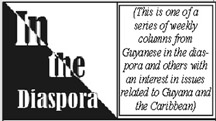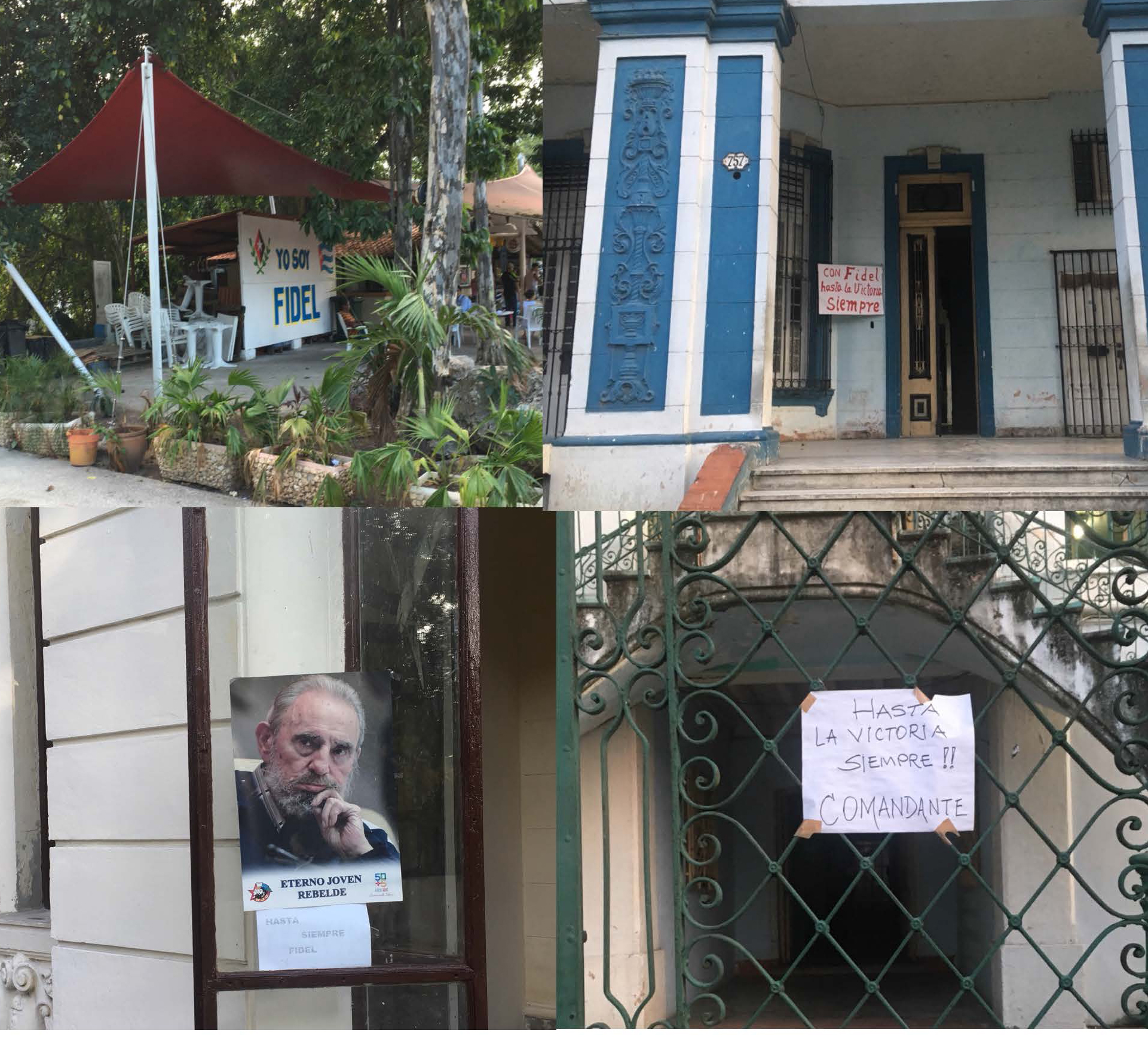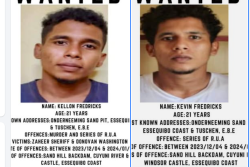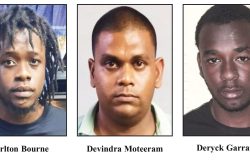I arrived in Havana, Cuba, on the evening of Sunday, December 4. Earlier that day Fidel Castro’s ashes had been privately interred at Santa Ifigenia cemetery in Santiago de Cuba. The previous weekend, there had been a massive rally at the Plaza de la Revolución, before a simple motorcade would leave the capital city for Santiago, retracing in reverse the victorious journey of the revolutionary fighters nearly sixty years ago.
A friend who was born and has only lived in Cuba said to me that the most significant local reverberation of the announcement was the silence that followed: “It was so strange, I didn’t realise how much the life of this city is defined by noise and music until the music stopped.” And even though the nine days of mourning had officially ended, her sense was that Havana was so much quieter than usual.
 I had come for the 10th annual international conference of Caribbean Studies, sponsored by the Norman Girvan Chair of Caribbean Studies at the University of Havana. The opening ceremony celebrated the fiftieth anniversary of the establishment of the Institute of International Relations (IIR) at the St. Augustine campus of the University of the West Indies (the same year that Guyana and Barbados would join Jamaica and Trinidad and Tobago as independent countries). A plaque was presented to Dr Jessica Byron, the recently appointed and first female Director of the IIR. Dr Mark Kirton, previously Acting Director and whose efforts have been central to forging the close institutional links that exist between the two programmes, participated in a panel the following day reflecting on the history and future prospects of the Institute. Renowned Cuban scholar Dr Miguel Barnet was also honoured on the 50th anniversary of the publication of his Biografía de un Cimarrón, based on interviews with Esteban Montejo, a former enslaved Afro-Cuban man who was more than 100 years at the time.
I had come for the 10th annual international conference of Caribbean Studies, sponsored by the Norman Girvan Chair of Caribbean Studies at the University of Havana. The opening ceremony celebrated the fiftieth anniversary of the establishment of the Institute of International Relations (IIR) at the St. Augustine campus of the University of the West Indies (the same year that Guyana and Barbados would join Jamaica and Trinidad and Tobago as independent countries). A plaque was presented to Dr Jessica Byron, the recently appointed and first female Director of the IIR. Dr Mark Kirton, previously Acting Director and whose efforts have been central to forging the close institutional links that exist between the two programmes, participated in a panel the following day reflecting on the history and future prospects of the Institute. Renowned Cuban scholar Dr Miguel Barnet was also honoured on the 50th anniversary of the publication of his Biografía de un Cimarrón, based on interviews with Esteban Montejo, a former enslaved Afro-Cuban man who was more than 100 years at the time.
At the lively workshop on women and gender that took place the day before the conference’s official  opening, an image of Fidel was projected on the screen, and several presenters were on the verge of tears as they paid brief tribute to Castro. Some of our Cuban colleagues were eager to attend an evening performance and tribute to Fidel Castro featuring one of the country’s leading dancers, and anticipated a capacity audience. At ICAP, the Cuban Institute of Friendship with Peoples, I was excited and honoured to meet Fernando González Llort, one of the Cuban Five who had been jailed for almost two decades in the United States for ‘conspiracy to commit espionage’ on behalf of the Cuban government; their release was due in no small part to the mobilization of international friendship and solidarity networks, so it seems fitting that Llort, a dynamic and gracious man, is now ICAP’s Vice-President. In the entrance area there is a condolence book discreetly placed on a table, surrounded by a few mounted images of Fidel.
opening, an image of Fidel was projected on the screen, and several presenters were on the verge of tears as they paid brief tribute to Castro. Some of our Cuban colleagues were eager to attend an evening performance and tribute to Fidel Castro featuring one of the country’s leading dancers, and anticipated a capacity audience. At ICAP, the Cuban Institute of Friendship with Peoples, I was excited and honoured to meet Fernando González Llort, one of the Cuban Five who had been jailed for almost two decades in the United States for ‘conspiracy to commit espionage’ on behalf of the Cuban government; their release was due in no small part to the mobilization of international friendship and solidarity networks, so it seems fitting that Llort, a dynamic and gracious man, is now ICAP’s Vice-President. In the entrance area there is a condolence book discreetly placed on a table, surrounded by a few mounted images of Fidel.
At the Plaza de la Revolucion (Revolution Square), a massive black and white image of Fidel Castro has taken over the side of the National Library. Dressed in his trademark military fatigues and wearing a backpack, he gazes out from the Sierra Maestra mountains. But this seems to be a temporary banner, unlike the permanent fixtures displaying images of fellow revolutionaries Camilo Cienfuegos and Che Guevara. There were no official signs around the city. It took me about 40 minutes to walk to the conference sessions at the university, and I took a different route there and back each time. I saw just four tributes on the streets, one photograph and a few handwritten signs taped to gates (Eterno Juven Rebelde; Con Fidel, Hasta La Victoria Siempre; Yo Soy Fidel).
Initially surprised that there seemed to be so little public commemoration, less than two weeks after Fidel Castro’s passing, I found myself thinking carefully about what I expected to find. After all, it was not as if Cubans did not anticipate this day. And Fidel Castro had left office a decade ago. More importantly, I asked, what kinds of expectations was I bringing to bear on what I observed during my brief stay last week? After all, the world had just witnessed the election of a presidential candidate in the United States who profits from his name, carried on his buildings, golf clubs and clothing line. In the Caribbean we are also no stranger to a certain kind of cult of personality that attends the naming of airports, towns, buses and boats.
In contrast, and in keeping with his wishes, there are as far as I know no public buildings or spaces that bore Fidel Castro’s name during his lifetime. The first has come after his death, a metal plaque affixed to the tomb in Santa Ifigenia which reads simply ‘Fidel.’ At the memorial in Santiago, Cuban President Raúl Castro committed the government to ensuring this would not change; in a report in the December 4, issue of the British Guardian he promised that the National Assembly would soon be passing a law that Fidel Castro’s “name and likeness would never be used on institutions, streets, parks or other public sites, and that busts, statues or other forms of tribute would never be erected.”
I spoke with several people in Cuba about this decision. One family I spoke with said that they had heard that some people were thinking of writing to the Government, asking them to reconsider. They were worried that younger generations, and Cubans not yet born, would have no memory of Fidel and the Revolution.
But overall, no-one seemed really surprised. An older Afro-Cuban man, now an engineer working in a university, said he could understand why people might want permanent memorials, but he thought this desire missed something simpler and more profound. As I spoke with him, I thought about my own initial expectations. Fidel, he said, had offered the most fitting response to imperialist powers who wanted to accuse him of an obsession with power and a cult of personality surrounding himself. More crucially, he observed, he had left the ultimate challenge for the Cuban people.
What is that challenge? In the days following the death announcement, the words “Yo Soy Fidel” (I am Fidel) were written in chalk on the pavement, held up on handmade posters, painted on people’s arms, foreheads. As the elder noted, the challenge will be to internalize, manifest and actively live that declaration of affinity. If Fidel is to be honoured and if his legacy is to continue to shape Cuban futures, then memorialization will not be preserved in stone. Rather, it will be activated and reproduced through the practices of Cubans that will defend the ideals of a revolution that has aspired to a society of genuine and meaningful equality and inclusion.
Undoubtedly, this will not be an easy road. Economic difficulties and the vexed question of food security are a grave reality. Unsurprisingly, the fate of the Greater Caribbean and specifically Cuba following the recent US elections was a central theme over the three days of the meetings that brought together participants from Cuba, the Greater Caribbean and the diaspora. At the José Martí International Airport these changes are reflected in the announcement of departures and arrivals from Charlotte, Atlanta, New York, Florida. The opening provides both opportunity and challenge. A taxi driver who I met summed this up well. He has a university degree and speaks three languages, but finds he can make more money in the tourist sector than in a government job. He finds this frustrating, and at the same time is extraordinarily proud (who wouldn’t be?) that all of his children are in their final years of medical school at the University of Havana. As he said to me, where else could I do this? (At the University of Toronto where I work, annual medical school tuition fees are Cdn$25,061.40; Cdn$71,763.40 for international students). In his opinion, Cuba has to meet the world, but Cubans have to prepare to meet the world on their own terms and to fiercely defend these social ideals of the revolution. As he dropped me off, he said, “We cannot take these things for granted.” Or, like the music that stopped the day Fidel Castro died, they won’t be appreciated and understood until they are gone.
In her address at the conference opening, Dr June Soomer, Secretary-General of the Association of Caribbean States referred to a recent World Bank report that underlined the comparatively high per capita spending on education in Cuba and noted that, notwithstanding economic difficulties (also facing the health sector) the education system in Cuba remains preeminent across the Latin American and Caribbean region. In his December 7, Stabroek News column, ‘Dining With Fidel,’ Dr Henry Jeffrey noted this Cuban emphasis on investing in people (‘human capital’ in technocratic speak), and recalled attending a conference in Havana in 1990 (around the time of the Special Period) at which Fidel Castro declared that “only education can save the world.”
A literate, critical population. A thriving, creative culture. An incredibly strong and tenacious sense of Cubanidad. Yo Soy Fidel. No public monuments to Fidel Castro. This will not be as easy for younger generations with no active memory of that time, but as Fernando González Llort told me, one of the things he found most moving and that gave him so much hope was the vast numbers of young people in both Havana and Santiago who showed up at the memorials, ‘Yo Soy Fidel’ painted on their bodies. Fidel Castro may have left the ultimate challenge, but perhaps what he was really expressing was a simple faith in the spirit, will and strength of the Cuban people, to hold on to the ideas and ideals of the Cuban revolution he lived for.









